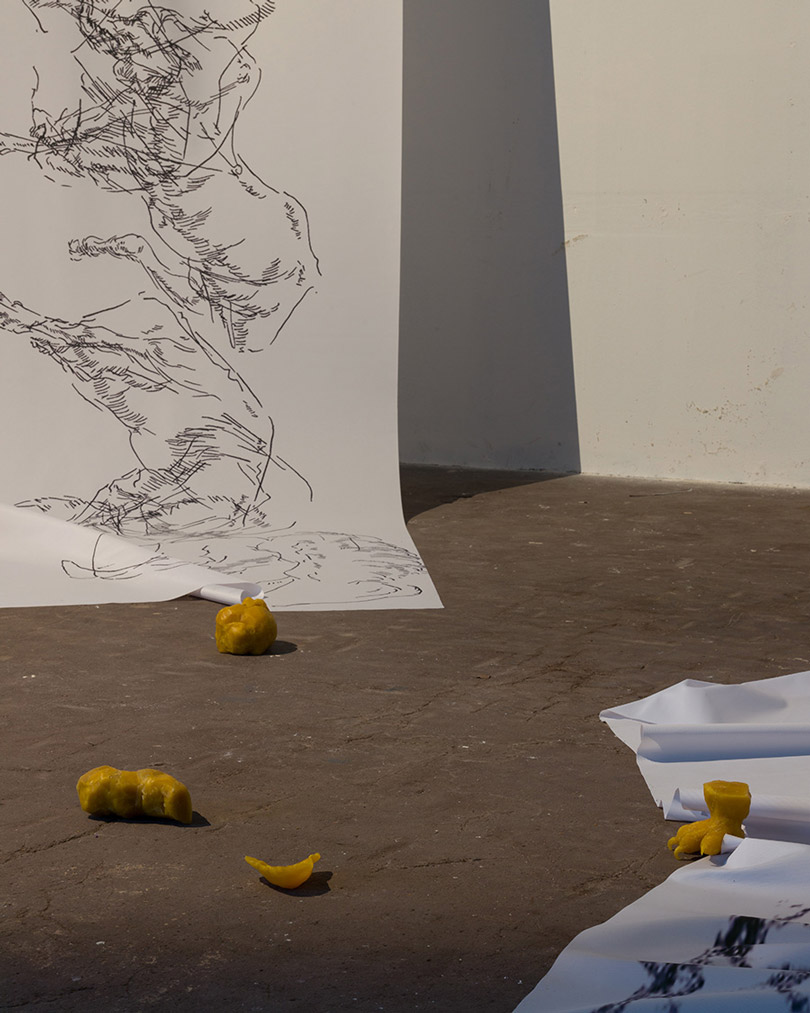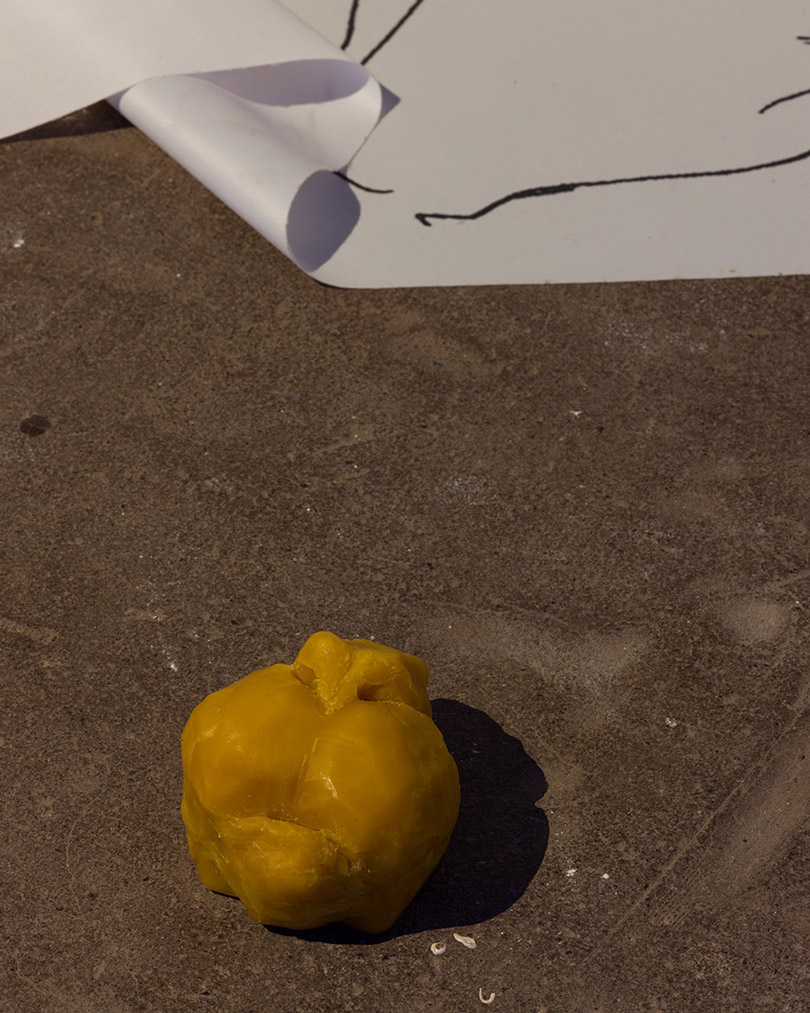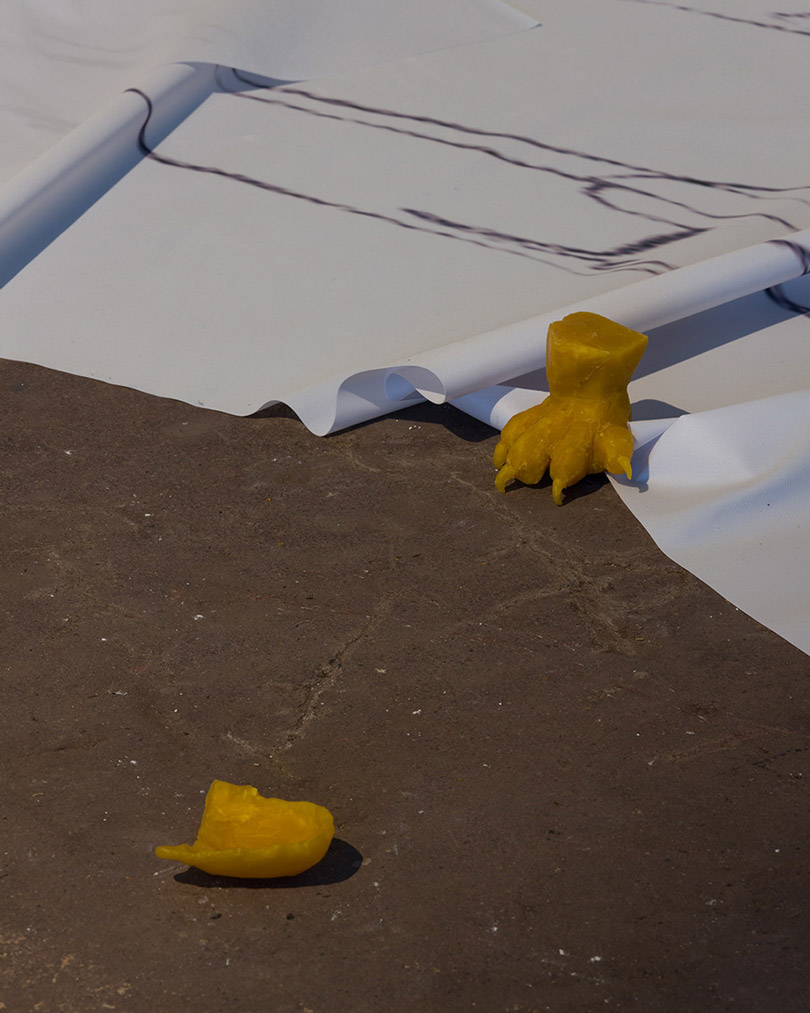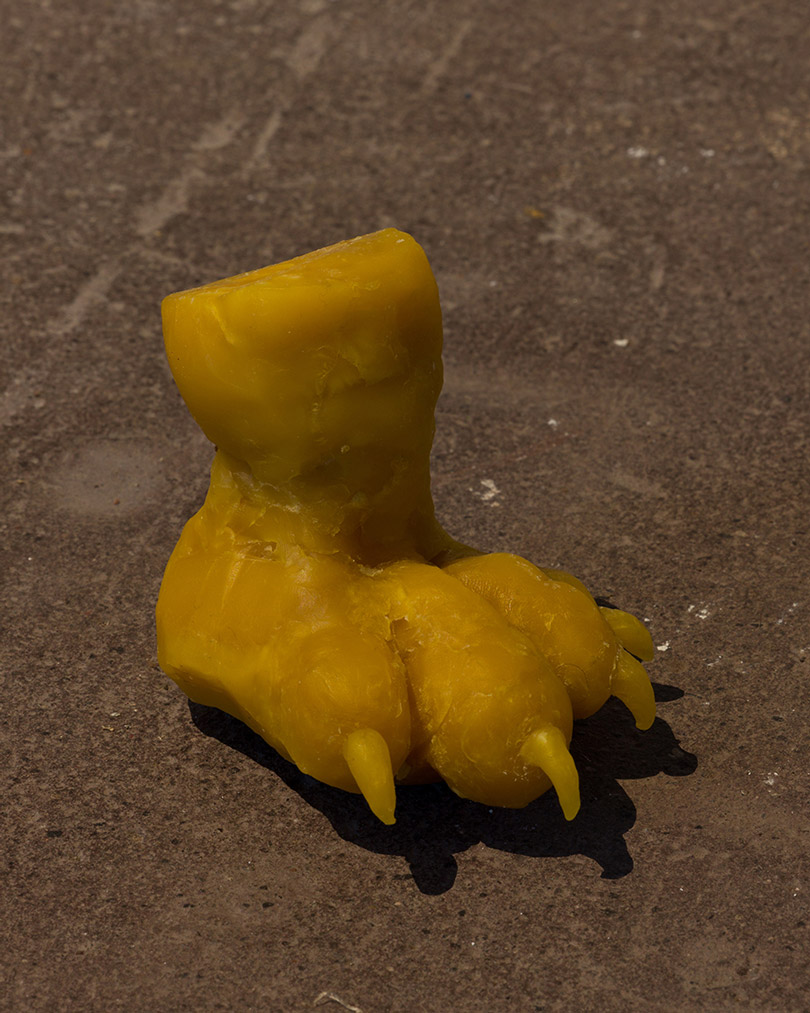There is a gun in the exoskeleton of the car
2-channel video installation, beeswax, cloth, 2021
A singing waiter, a beekeeper, and a bookmaker in a car chase. In the video installation, we encounter a scattered gallery of characters - a series of times and places. They all had a connection to an incident at a racetrack and were mourning the loss of ‘the strawberry tiger’ who passed away in an accident during the previous race. Since then, activities were resumed, but something had been lost in the direction of the race.
The exhibition was created in close collaboration with several musicians. The racetrack was conceptually built on the metronome, where the rhythmic became a bodily apparatus as a counter. The result is an animated narrative that works within the intersection between film and musical composition.
With the racetrack as a musical figure, the exhibition revolved around notions of collective bodies, disorientation, dishwashing and death. A racetrack is a circuit that constantly lists who is leading, who is lagging behind and who is last. The racetrack points towards somersaults without bodies, or bodies passing by.
Film trailer
Lisbeth Bonde, Review of the work, Kunsten.nu, 2021:
"Mark Tholander (b. 1988) is both a writer and visual artist (...) in a longer video production he has revolved around the concept of disorientation – the new video is the third part of a trilogy. In order to investigate this phenomenon, he shows some of the absurdities that characterize modern (everyday) life, where destabilization of the normal is constantly lurking beneath the surface, as we are actually moving on thin ice.
In his new two-screen animated film entitled There is a Gun in the Exoskeleton of the Car, he unites sound and image. An exoskeleton is an outer skeletal frame that some car brands are equipped with. It is usually made of aluminum, steel or carbon fiber tubes as an additional stiffening that protects the car during, for example, collisions. Shellfish also have exoskeletons, ie. shells that protect them and hold their bodies together instead of a skeleton. But that's another story. The fact that there is a gun inside this exoskeleton is to me like one of the many riddles lined up in Tholander's universe. That doesn't change the fact that the film is fundamentally entertaining and extremely strange - both in a dreamlike and slightly goofy way.
The sound side plays an important role, and the rhythmically pulsating music that follows the sound of the metronome is accompanied by speech coming from a waiter, some dishwashers, a pianist, a bookmaker, etc. It sounds like an American feature film, but all reason is suspended: plates fly around in the air, a singing waiter addresses the same table and repeatedly asks the guests to order, and on the racetrack the red car is filled with passengers including a big, yellow tiger. What binds the scenes together is apparently a shared longing for a "strawberry tiger" that has disappeared. An absurd metaphor for a more extensive loss of meaning in modern life?"
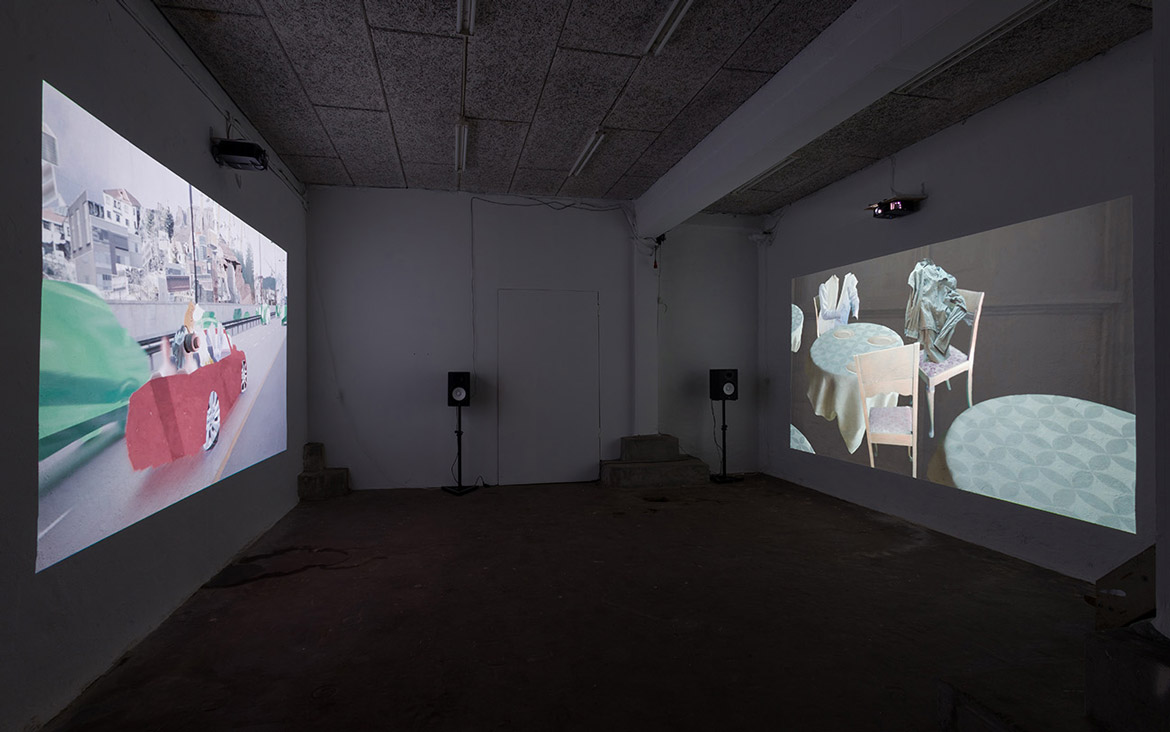
Installation view. OK Corral, Copenhagen, Denmark. Photo: Mikkel Kaldal.

Installation view. OK Corral, Copenhagen, Denmark. Photo: Mikkel Kaldal.
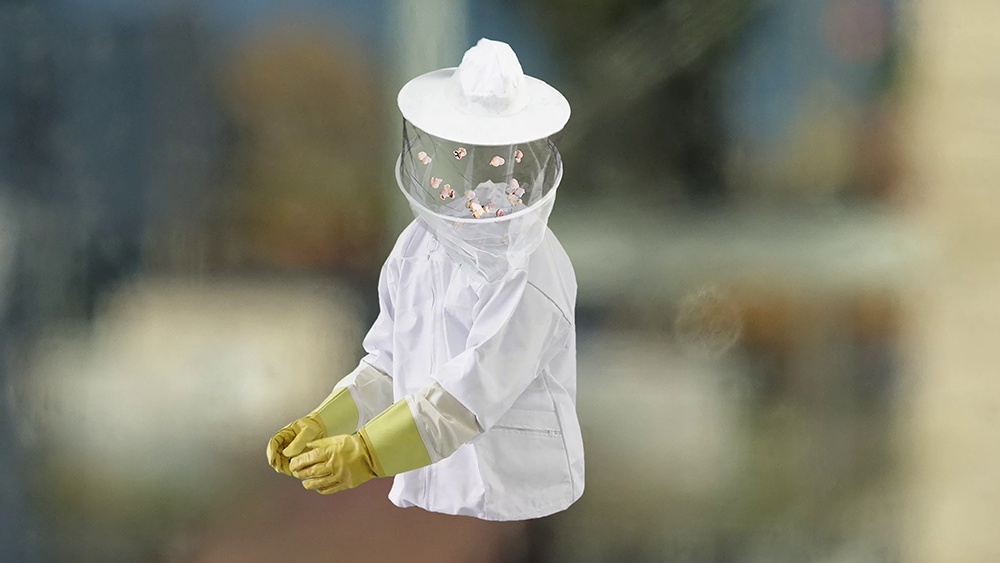
Film still.
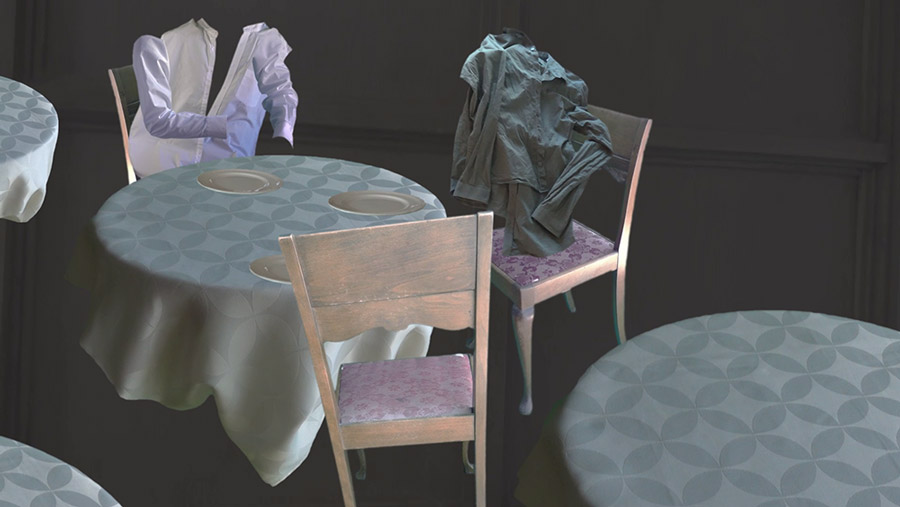
Film still.

Film still.
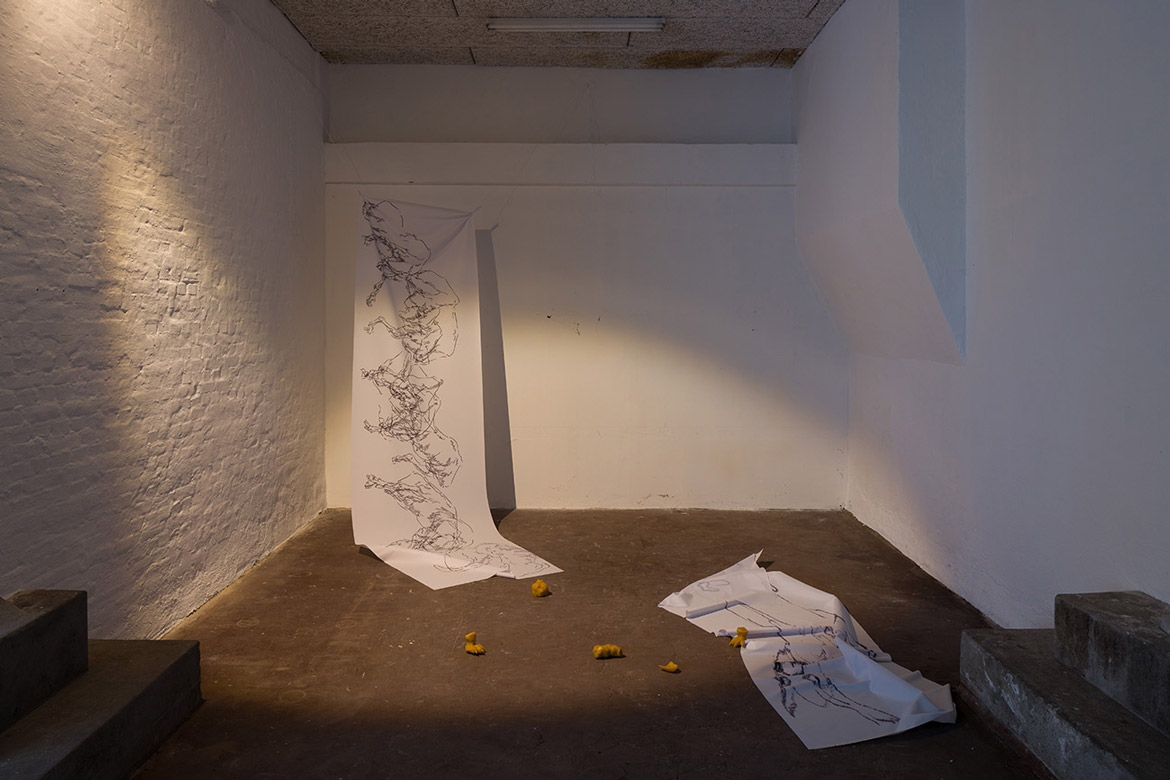
Installation view. OK Corral, Copenhagen, Denmark. Photo: Mikkel Kaldal.
Installation views. Ok Corral, Copenhagen, Denmark. Photo: Mikkel Kaldal.
Installation views. Ok Corral, Copenhagen, Denmark. Photo: Mikkel Kaldal.
The work is the third episode in a series where the two previous episodes were we were waiting for a train and They built the widened coral reef.
This third episode of the series moves further towards a musical composition. The musical was a central part of the work's creation, especially the rhythmic, where we used the metronome in a conceptual way to construct the various musical pieces, as a drawing. Rhythmic music is drawing of ontological conditions. Rhythm relates to the beat and thus to the heartbeat. By applying a materialistic thinking, one could think of human ontology through the heartbeat, and in this way, attaching the ontological to a materiality: the count as being, as being-that-acts-with-us-outside-us. Something that counts, and counts with us, without regard. It becomes a time relationship that one must relate to: ontology as a material count that is both outside but also inside. Within this, a flexible time can be exercised, one moving in all directions, but still with the fortress in the beat, in the heartbeat, in the body: and that is perhaps what materiality can be said to be.
"I’m just gonna lie down," he said.
A lot of characters are recurring: The Pianist and The Strawberry Tiger. The Pianist becomes a link to the musical level: that, which constantly can be heard, but never seen. In that sense, the Pianist represents phenomena that cannot be experienced directly, but which is part of all experience - for example, the lurking fear of an imaginary catastrophe that hasn’t happened yet, but lives within our everyday lives as an imaginary figure. The Strawberry Tiger, on the other hand, is an embodiment of the “catastrophe” that visits. The “catastrophe” here is not explosive or spectacular. It neither thunders nor rumbles. It is cheerful, everyday, calm and not least polite. In its politeness, the catastrophe arrives unnoticed, continuously, and is not possible to experience. The Strawberry Tiger becomes an absolute whose immanence cannot be ignored or resisted.
"Why are you lying down?"
"Sometimes you just have to lie down."
In cross-cuts you see a car chase taking place. It is unclear where the chase takes place and it is unclear what the car is fleeing from. At the same time, it seems that the car chase never ceases. Nothing happens, and a lot happens. The empty as a machine that produces something.
"It's an entirely different view from here."
"It is? What do you see?"
"A tiger."
"Damn."
"Damn."
The whole work is part musical, part composition - and part comedy. To laugh is to share a direction, as it establishes a common object “laughter” (a quasi-object). Some will laugh, and some will not laugh. There is something disruptive about being the one who does not laugh: whether it is towards a work of art, a performance, or a family dinner. No matter what play you are in, the horizon (the board) changes as soon as you do not allow the common object (laughter) to arise. A laugh validates the situation, even if you laugh out of discomfort.
Credits:
Script, animation and composition:
Mark Tholander
Voices:
Tamara Farris (The bookmaker)
John Bates (The colleague)
Jay Maksenuk (Dishwasher 1)
Trevor Forest (Dishwasher 2)
Adam Weaver (The waiter)
Kevin J. Bond (The pianist)
Filming of characters/suits, chromakey and rotoscoping:
Mark Tholander
CGI, car chase scenes:
Mikkel Battefeld
Assisting CGI and animation, car chase scenes:
Mark Tholander
Animation, tiger, vector:
Sophia Ioannou Gjerding
Animation, tiger, håndtegnet:
Mark Tholander
Piano:
Johan Feierskov
Anastasia Nastya Bragina
Drums:
Søren Høi
Victor A. Carracedo
Bernardo Yacono
Bass:
Ailén Antú
Lole Dovo
Mitch Cockman
Guitar:
Zek Starosky
Saxophone:
Jon Sensmeier
Mixing and mastering:
Johan Feierskov
William Kudahl
Tafadzwa Chingono
Paulo Germano
Bike 3D model:
Semyon Filippov
Thanks to Københavns Biavlerforening for letting me borrow the suit for the film recordings.
The exhibition was supported by Statens Kunstfond.
((( Go Back )
:::::::::::::::
:::::::::::::::






